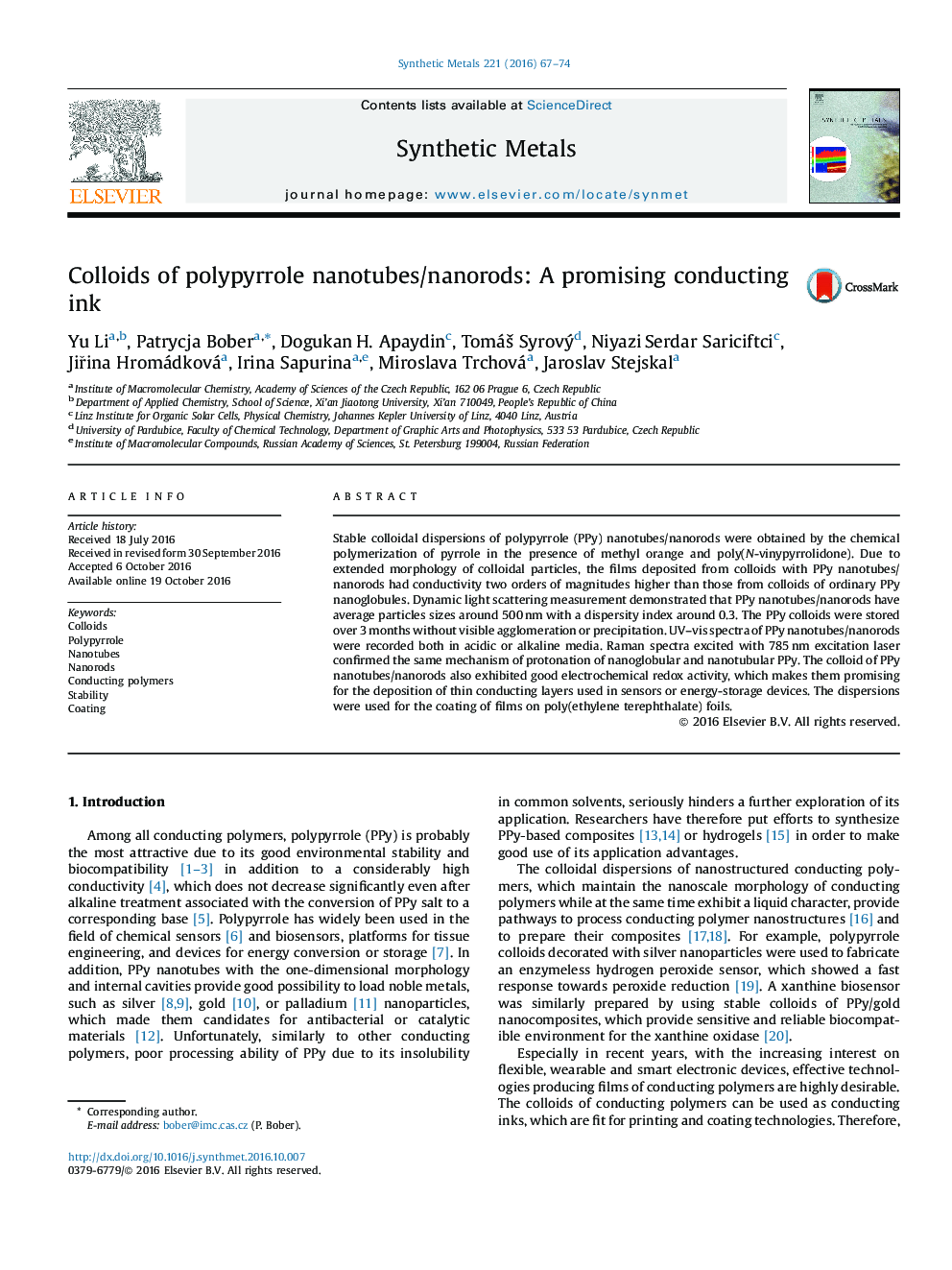| Article ID | Journal | Published Year | Pages | File Type |
|---|---|---|---|---|
| 5435569 | Synthetic Metals | 2016 | 8 Pages |
â¢Stable polypyrrole colloidal dispersion has been synthesized by a template method.â¢The morphology of colloidal particles was successfully tuned from globular to one-dimensional nanotubular.â¢The conductivity of the films deposited from nanotubular colloids was high, 1.54 S cmâ1.â¢The nanotubular colloid exhibited improved electrochemical activity.
Stable colloidal dispersions of polypyrrole (PPy) nanotubes/nanorods were obtained by the chemical polymerization of pyrrole in the presence of methyl orange and poly(Nâvinypyrrolidone). Due to extended morphology of colloidal particles, the films deposited from colloids with PPy nanotubes/nanorods had conductivity two orders of magnitudes higher than those from colloids of ordinary PPy nanoglobules. Dynamic light scattering measurement demonstrated that PPy nanotubes/nanorods have average particles sizes around 500Â nm with a dispersity index around 0.3. The PPy colloids were stored over 3 months without visible agglomeration or precipitation. UV-vis spectra of PPy nanotubes/nanorods were recorded both in acidic or alkaline media. Raman spectra excited with 785Â nm excitation laser confirmed the same mechanism of protonation of nanoglobular and nanotubular PPy. The colloid of PPy nanotubes/nanorods also exhibited good electrochemical redox activity, which makes them promising for the deposition of thin conducting layers used in sensors or energy-storage devices. The dispersions were used for the coating of films on poly(ethylene terephthalate) foils.
Graphical abstractDownload high-res image (239KB)Download full-size image
